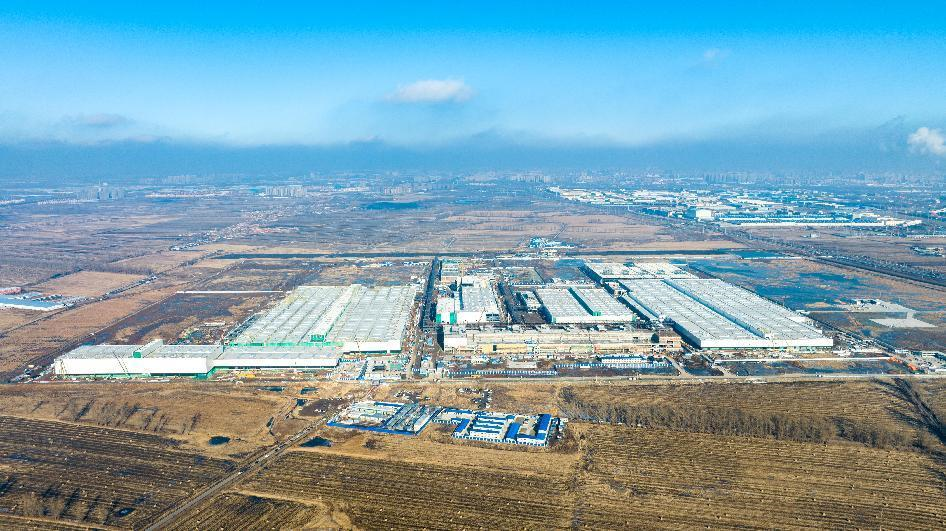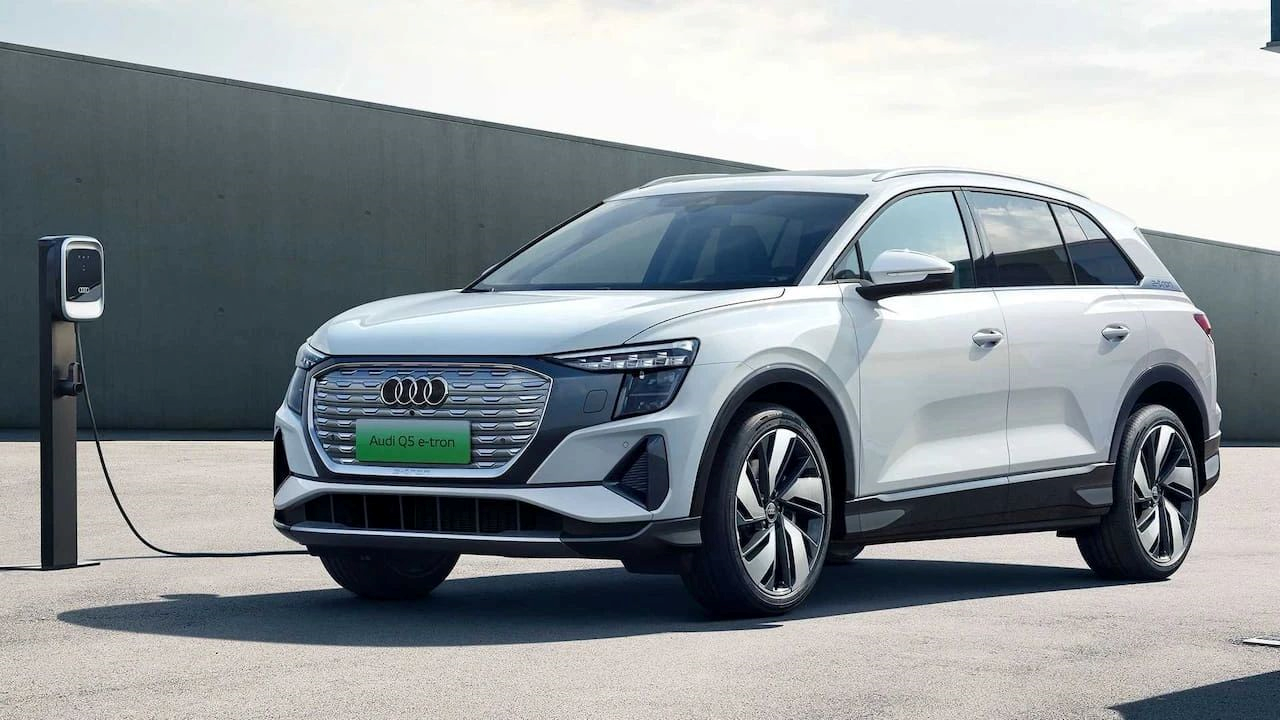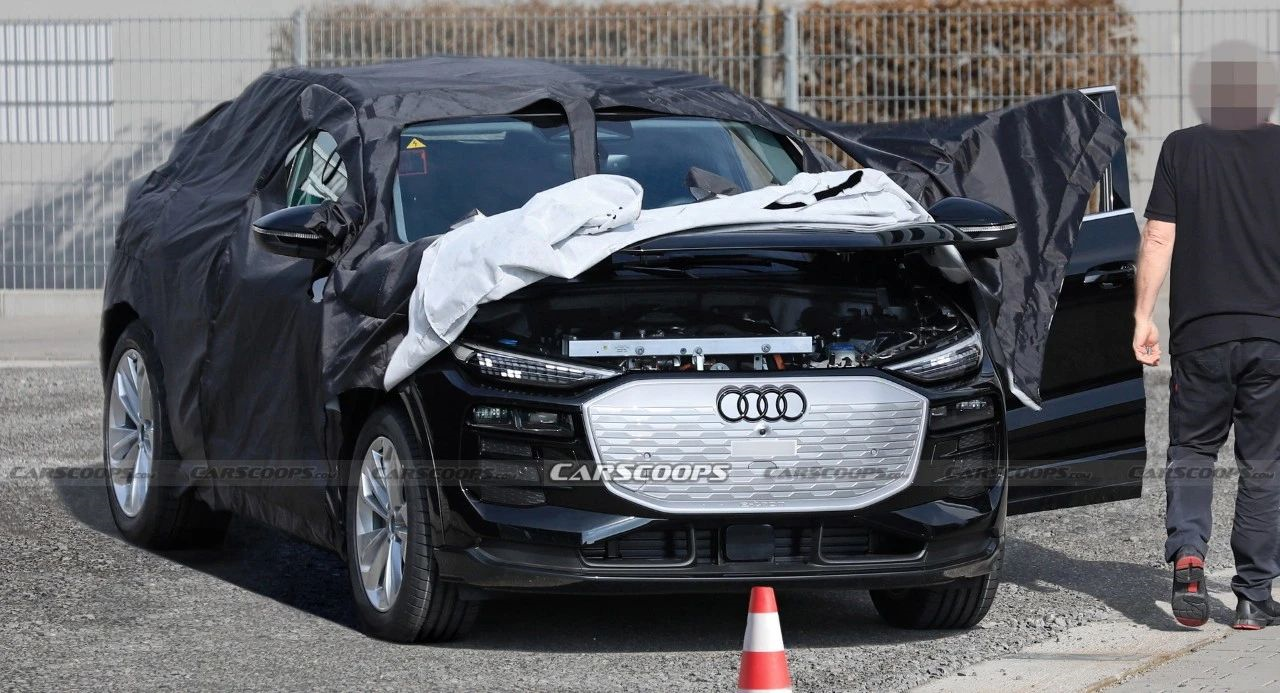Author | Zhu Shiyun
Editor | Qiu Kaijun
“Chinese speed, German quality.“
“Chinese speed” refers to the fast construction of the Audi FAW NEV Co., Ltd. (Audi FAW) factory: on June 28, 2022, the Audi FAW production base started construction in Changchun, Geelyn, and in less than 5 months, the new factory achieved warm closure, one month ahead of schedule.
Warm closure means that the entire main structure of the factory has been completed and equipment installation and commissioning has begun. By the end of 2024, the Audi FAW Changchun factory will produce the A6 and Q6e-tron models based on the Audi PPE platform.
“German quality” of course represents Audi, the well-established German automaker. However, in the face of the electric vehicle trend, quality alone is becoming increasingly difficult to convince consumers.
Audi needs to accelerate its electrification. Perhaps this factory is a turning point.
“The speed miracle is the result of the joint efforts of multiple parties.” Audi FAW CEO Marcus Eckermann said: “Efficient teamwork and collaboration, high-standard digital solutions guidance, and the strong support of the Geelyn government, all have allowed Audi FAW NEV to win the race against time, and set a new benchmark for Sino-German cooperation.”
The question is, has Audi’s “Chinese speed” come too late?
The other side of the speed miracle
Before becoming a “speed miracle,” the Audi FAW Changchun factory went through a lengthy “deskwork.”
In October 2020, FAW Group and Audi of Germany signed an agreement: Audi FAW NEV will introduce the high-end pure electric platform PPE jointly developed by Audi and Porsche. The first factory will invest more than 30 billion yuan, and the first model will be produced in Changchun in 2024.
In March 2021, Audi FAW completed its business registration, but has been “on hold” on paper since then. It wasn’t until February of this year that the new factory project finally completed the approval process.
In the project filing announced by the Geelyn Provincial Development and Reform Commission’s Industrial Department, the new factory was planned to start construction in April, but due to various factors including the pandemic, the start time was delayed by nearly three months.
This is in sharp contrast to another “Chinese speed.”
Tesla’s Shanghai factory officially announced its settlement in Shanghai in July 2018, started construction in January 2019, piloted production in November, and produced 1 million complete vehicles within 3 years, making it Tesla’s most efficient and currently the world’s most efficient super factory.##Of course, Audi has also gained something.

In 2020, Audi and FAW signed a memorandum of understanding to establish a second joint venture. In the first joint venture, FAW-Volkswagen-Audi, Audi holds a 10% stake. In the second joint venture, Audi-Fujian, Audi holds a 60% stake.
FAW-Volkswagen’s Foshan factory, which can produce the MEB platform, has an annual production capacity of 600,000 vehicles;
Audi-Fujian is responsible for the production of PPE platform models, with a factory design capacity of 150,000 vehicles in the initial stage;
In 2021, the SAIC Audi project was launched, supporting the SAIC Volkswagen Anting New Energy Factory’s MEB platform with an annual production capacity of 300,000 vehicles;
The two products are sold and serviced by the FAW-Volkswagen-Audi investor network.
As a result, Audi has become the only luxury brand with two partners and three joint ventures in China, with a pure electric vehicle capacity of about 400,000 vehicles before 2025 and an expanding dealership network of more than 600 outlets.
This was supposed to be a win-win strategy for both parties, but who would have thought the game would change.
e-tron “lagging”
We have every reason to believe that the new Audi-Fujian factory will be put into operation as planned by the end of 2024.
The problem is whether 2024 is too late. After all, the Chinese passenger car market has undergone earth-shaking changes compared to when the plan was made in 2020.
In 2020, the market penetration rate of new energy passenger vehicles in China was 6.18%.
Recently, data from the China Association of Automobile Manufacturers shows that the market penetration rate of new energy passenger vehicles from January to October has reached 24.7%, accounting for more than 80% of the contribution to market growth – the main part of market growth.
The changes in the high-end luxury market where Audi is located are even more pronounced.
In the first half of the year, EVs, PHEVs, and HEVs accounted for 56.9% of the market share in the market segment over 300,000 yuan, and 38.5% in the market segment between 200,000 and 300,000 yuan. Moreover, the penetration rate of new energy vehicles in non-dual-limit cities has surged, reaching around 30% in Foshan, Wuxi, Suzhou, Hefei, Nanjing, and other places.But when it comes to “cake,” it’s not the traditional strong teams.
On the one hand, it’s Tesla Model Y and Model 3 which cost between 300,000 and 400,000 yuan and are “killing it” in the Chinese market. In the first 10 months of this year, Tesla has registered nearly 338,000 vehicles in China.
On the other hand, Chinese luxury car brands are rising. For example, NIO has an average selling price of 434,700 yuan, LI Xiang sells for 296,000 yuan, and the price of JI KE is 335,000 yuan. The number of registrations for the first ten months of this year is 91,000, 98,000, and 49,000, respectively.
Only these four brands and about 15 models account for 14.4% of the registration volume of China’s new energy vehicles in the first ten months.
At the same time, the registration volume for Mercedes-Benz, BMW, and Audi’s new energy products are 29,800, 39,600, and 7,269, respectively. Obviously, even compared with “old rivals,” Audi is too far behind.
From the current product matrix, Audi currently has five models for sale (imported and domestically produced e-tron are the same model), while Mercedes-Benz and BMW have nine and eight models for sale respectively.
In terms of timing, BMW launched the iX3 which uses the fifth-generation eDrive power drive technology at the end of 2020, while Mercedes-Benz launched the EQS on the large pure electric platform EVA at the end of 2021. Audi’s Q5 and Q4 e-tron, based on the MEB pure electric platform, just went on the market in May of this year.

Moreover, the traditional brand premiums and the double “Buff” of hot models of luxury car brands are losing effectiveness. The entire BMW iX3 series achieved breakthrough sales only after an official price reduction of RMB 70,000; recently, Mercedes-Benz announced a price reduction of around RMB 200,000-230,000 for the EQS and RMB 50,000 for the EQE.
The survival environment for Audi’s new energy is even more perilous.
The price range is distributed between 300,000 and 400,000 yuan, and the Q4 and Q5 e-tron between 400,000 and 500,000 yuan, not only face direct competition with new forces such as Tesla and NIO but also face the intra-platform competition from Volkswagen’s ID.4 and ID.6.From the results, among the registration volume from January to October, Audi Q4 e-tron registered 1327 vehicles, Q5 e-tron registered 1428 vehicles, and no longer the “powerful” car of the past.
When will PPE “take effect”
However, the advantage of new games and new tracks is that new kings often emerge, and the strong are always the kings.
Clearly, Audi has also recognized the problem of “swaying” and released the “Vorsprung 2030” strategy focusing on electrification, autonomous driving, and digitization in August of last year:
Starting from 2026, all new models will switch to pure electric products; gradually discontinuing the production of internal combustion engines by 2033; equipping with a new operating system and software platform to empower autonomous driving by 2025; expanding after-sales service range to intelligent hardware and predictive maintenance.
The PPE platform will be the foundation for the implementation of this strategy.

Q6 e-tron, as Audi’s first model based on PPE, can achieve 800V DC fast charging, with a power of up to 350kW and equipped with a 100kWh battery pack. Compared with the Porsche Macan EV model on the same platform, the dual motor has a maximum power of 450kW and a maximum torque of 1000 N·m.
The dual motors of the A6 e-tron concept car are smaller, with a maximum power and torque of 350 kW and 800 N·m, and a cruising range of up to 700 km.
“The new models will have ultra-fast charging technology, high cruising range, a new electronic architecture, intelligent driving assistance systems, and a brand-new digital ecological system.” This is how Audi China President Wen Zeyue describes the PPE platform models.
 ###
###
However, the focus of future competition will be on intelligence, and Audi is facing significant uncertainty.
Currently, Cariad is focusing on completing new software architecture for Porsche and Audi’s high-end models. Recently, German magazine “Manager” reported that Trinity, Volkswagen’s flagship pure electric vehicle originally scheduled for production in 2026, may be delayed until 2030. The reason is that the development of the E3 2.0 system software, which Trinity is supposed to use, needs to be postponed from 2026 to 2029.
Dirk Hilgenberg, the head of Cariad, stated in an open letter on the company’s employee portal that the company will give itself more time on the 2.0 platform.
This is not the first time that software has caused problems for Volkswagen.
According to foreign media reports, due to software issues, the global launch of the Q6 E-Tron has been delayed by one year to September 2023. For the Macan EV, which is already under construction, “The software is still missing.” A Porsche insider told Automobilwoche.
In contrast, Lingxi, the software company under SAIC Group, has already achieved mass production of vehicle-level SOA software architecture.
The good news is that Cariad has established a Chinese branch and is working closely with Chinese chip company Horizon to accelerate the development of advanced driving assistance systems and autonomous driving systems for the Volkswagen Group’s Chinese market.
As Wen Zeyue said: “Join local partners to produce components locally, research and develop the latest technology, and build the future PPE models into a new generation of intelligent electric vehicles for the future.”
“We now know exactly where to focus our efforts, and at the same time, we have ample time to achieve our goals,” said Markus Duesmann, Chairman of the Board of Management of Audi AG, when introducing the “Vorsprung 2030” strategy.
In the fiercely competitive transformation period of China, the time left for Audi is probably not sufficient.
–END–
This article is a translation by ChatGPT of a Chinese report from 42HOW. If you have any questions about it, please email bd@42how.com.
